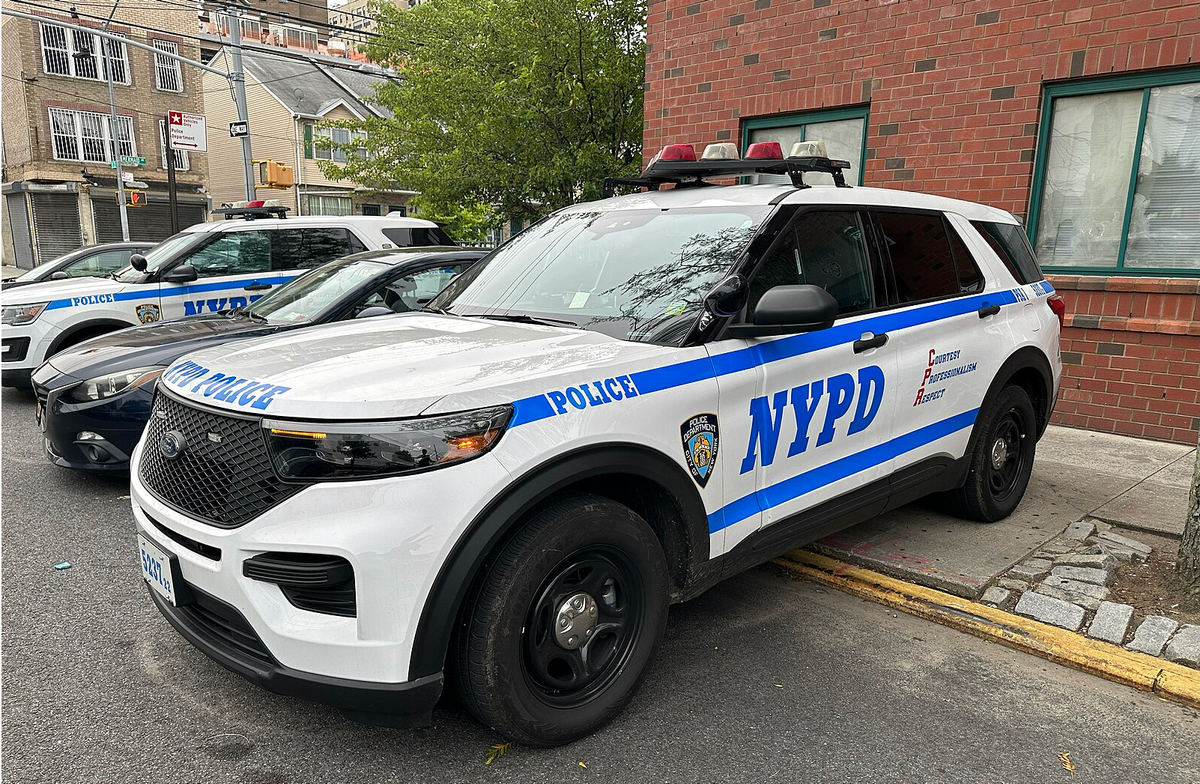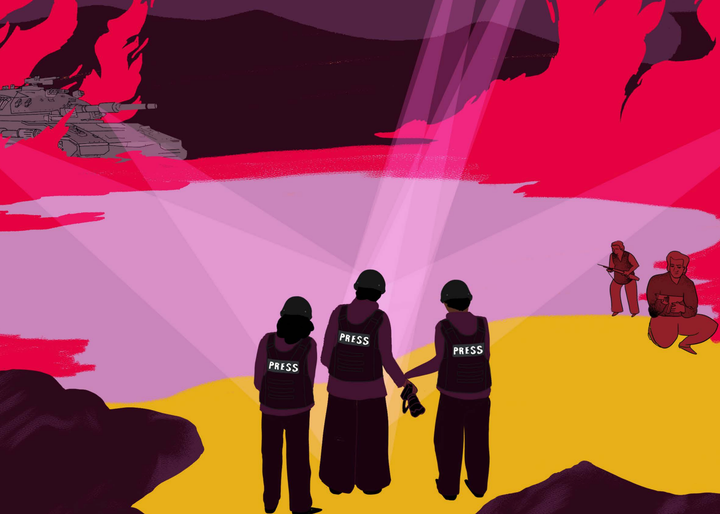NYPD Weaponizes Hate Crimes Law Against A Journalist
Press freedom and First Amendment groups immediately condemned this extraordinary attack on journalism

The following article was made possible by paid subscribers of The Dissenter. Become a subscriber with this special offer and support independent journalism on press freedom.
New York police raided the Brooklyn home of local journalist Samuel Seligson—twice—and charged him with a “hate crime” for covering an action by activists opposed to Israel's war on Gaza that involved spray-painting the homes of Brooklyn Museum directors.
Press freedom and First Amendment groups immediately condemned this extraordinary attack on journalism by New York authorities, which was clearly intended to discourage coverage of more militant acts of protest.
“Journalists play an important role in documenting protests and they should be allowed to gather news without fear of arrest or retaliation,” declared Katherine Jacobsen, a U.S., Canada, and Caribbean program coordinator for the Committee to Protect Journalists.
PEN America digital safety program director Viktorya Vila said, “Reporting is not a crime. The work of journalists is protected by the First Amendment and can require proximity to criminal activity.”
“Cops and prosecutors have dreamed up plenty of convoluted theories to criminalize journalism, but [the NYPD] charging a reporter with a hate crime for documenting news has to be one of the most outrageous yet,” the Freedom of the Press Foundation asserted.
According to a criminal complaint described by the Associated Press on August 6, Seligson was specifically accused by police of traveling with a “group of vandals as they defaced the facades of two apartments belonging to the museum’s director and president.”
Activists allegedly spray-painted the apartments’ doors and sidewalks with “messages that accused the two leaders of supporting genocide. They hung a banner at Brooklyn Museum director Anne Pasternak’s home that called her a “white-supremacist Zionist.”
“The activists wore face masks and dark clothing as they spray-painted slogans on the board members’ homes, according to court papers,” the AP also reported.
Seligson has licensed and sold footage to Reuters and ABC News, and police do not claim that he participated in the spray-painting. But unnamed “police sources” told the New York Post, a daily tabloid owned by Rupert Murdoch’s News Corp, that Seligson “helped the vandals load their equipment, drove to the scenes with them, trespassed on private property, and wasn’t wearing his press credentials.”
Let’s be clear: wearing press credentials does not necessarily discourage the NYPD from arresting reporters. Despite showing officers their press passes, several journalists have been arrested this year while trying to do their jobs.
One of the journalists who showed police his press pass but was still arrested is Samuel Seligson. He showed police his “city-issued” credential. According to the U.S. Press Freedom Tracker, police still arrested him while he was covering a pro-Palestinian rally in Brooklyn on May 18. (Charges against Seligson were dropped on August 7—around the same time that Seligson was charged with a hate crime.)
Both the Committee to Protect Journalists and Freedom of the Press Foundation have taken issue with the NYPD’s abuse and targeting of reporters.
“Arresting reporters is a crude form of censorship: it stops journalists from documenting current events, and protracted legal proceedings to dismiss baseless charges create financial and time pressures for reporters,” the organizations contended in a letter to Brooklyn District Attorney Eric Gonzalez.
Leena Widdi, an attorney for Seligson appeared on “Democracy Now.” She called it “shocking” that her client was charged with “not only felony criminal mischief but a hate crime enhancement.”
“It increases the potential sentence for a person if they’re convicted, and is, of course, you know, I think, significant in the way the public views conduct, significant in the way that the court system deals with conduct, and is absolutely dangerous in terms of the precedent that it sets for any pro-Palestine protesters and journalists covering that protest."
Widdi continued, “It necessarily perpetuates the narrative that any protest against the support for genocide is necessarily synonymous with protests against Jewishness. And my client himself is Jewish, as are many other anti-Zionist protesters.”
A prime example of how the “hate crime” enhancement is being manipulated against Seligson is the fact that activists allegedly spray-painted an inverted red triangle. The “hate crime” narrative treats the triangle as an antisemitic symbol “used by Hamas to identify Israeli military targets.”
Yet Chandni Desai, a Palestinian studies scholar at the University of Toronto, informed the Canadian Broadcasting Corporation that the “red triangle appears in the Palestinian flag, where it represents the role the Hashemite dynasty played in the Arab Revolt against the Ottoman Empire during the First World War.”
"The color red symbolizes the blood of those who sacrificed in battle for the Arab cause and the Palestinian cause. Red is also one of the Pan-Arab colors, along with black, white and green, which together represent Arab unity and independence,” Desai added.
As Widdi recounted, the police were so hellbent on arresting Seligson that they entered his home twice, “handcuffed his roommates, and searched for him.”
“On the second occasion, we had already arranged a surrender with the NYPD, and he had planned—I had been in touch with the detective on the case, and he had planned to turn himself in. And yet a second raid was executed on his home,” Widdi said.
This is quite obviously an instance where hate crimes law has been weaponized against a journalist.
“It is an extremely concerning assault on the First Amendment,” Widdi concluded. “The reason why the freedom of press is so strongly protected is because there’s some underlying belief that in order for the public to meaningfully participate in a democracy, they must be actually informed.”
“And criminalizing the press, manufacturing risk that they will be prosecuted if they cover protests, is extremely chilling behavior, and everyone should be speaking up about it. Everyone should be concerned. Everyone should be identifying this as a political decision and not a legal one.”




Comments ()